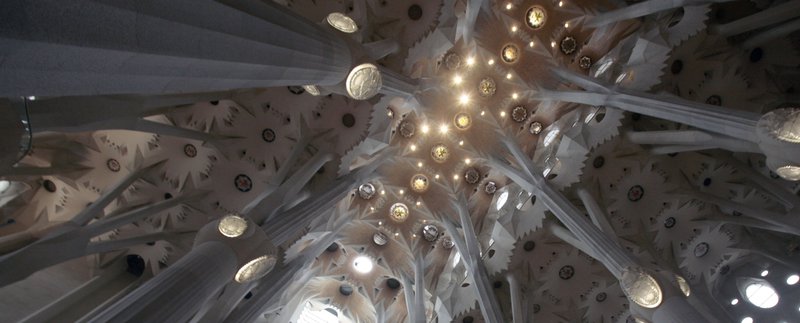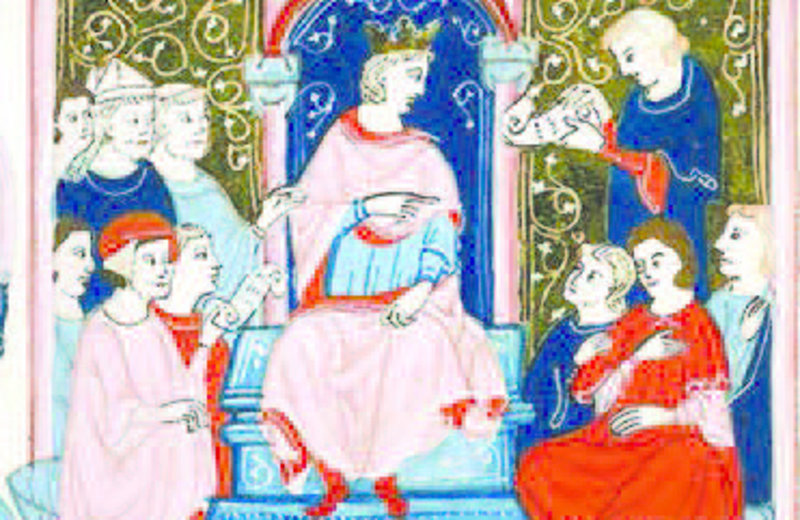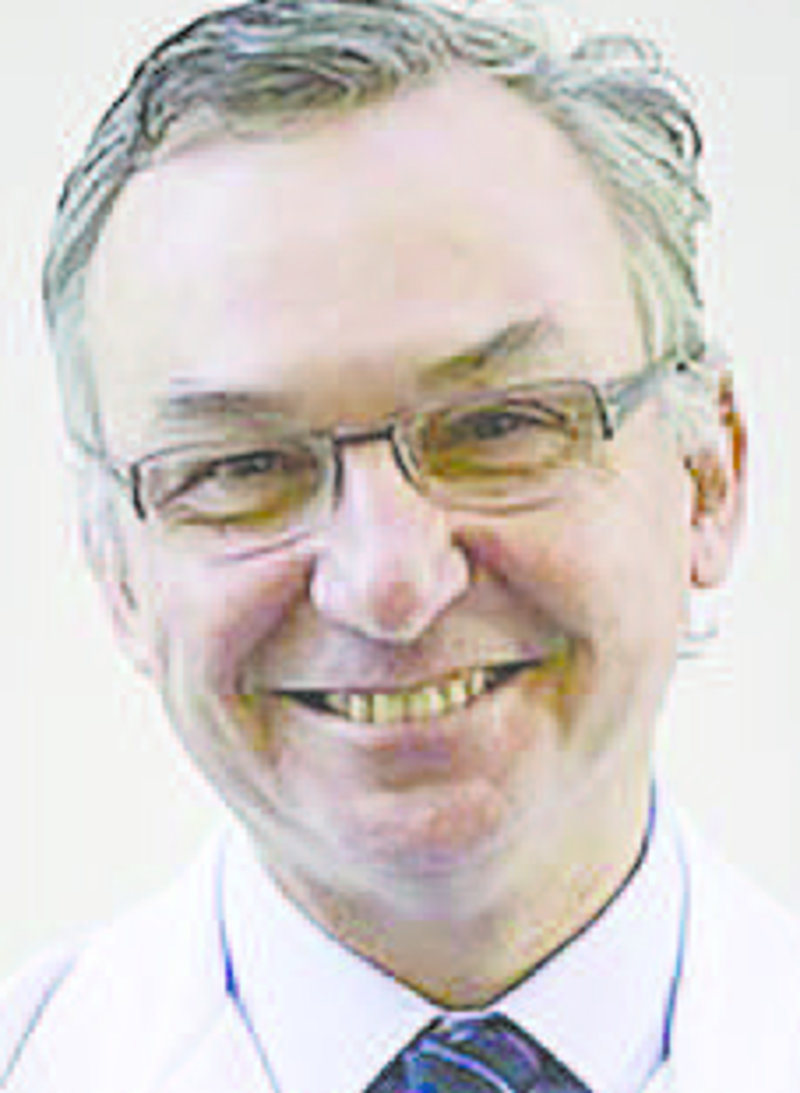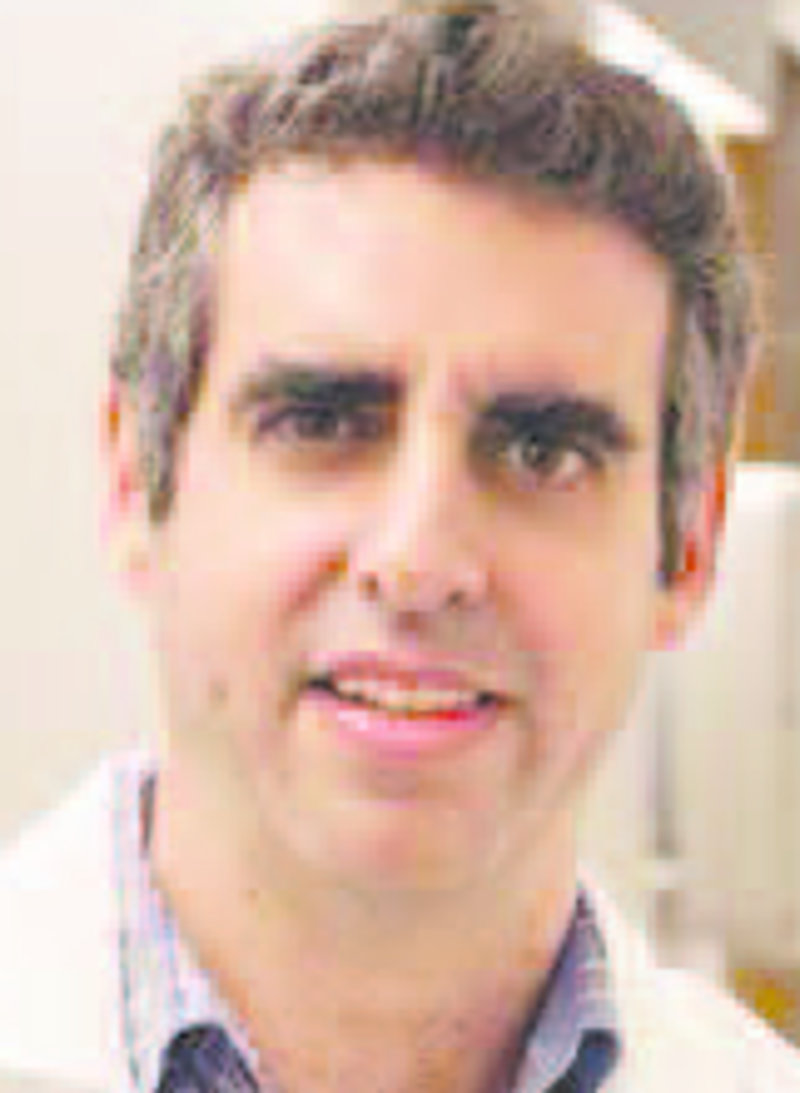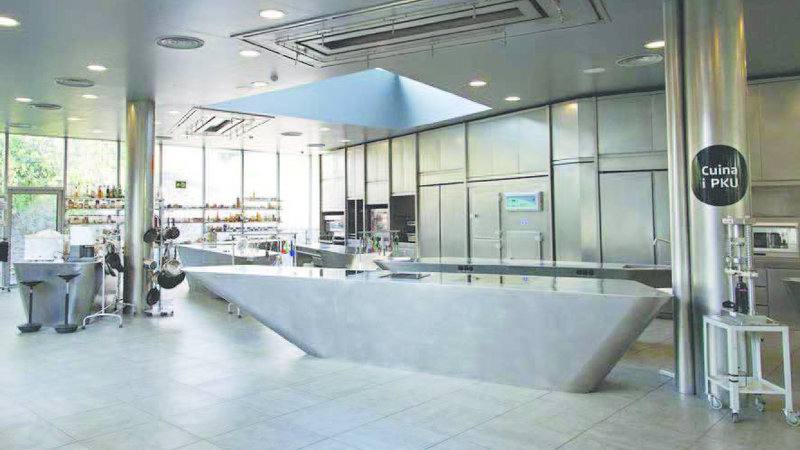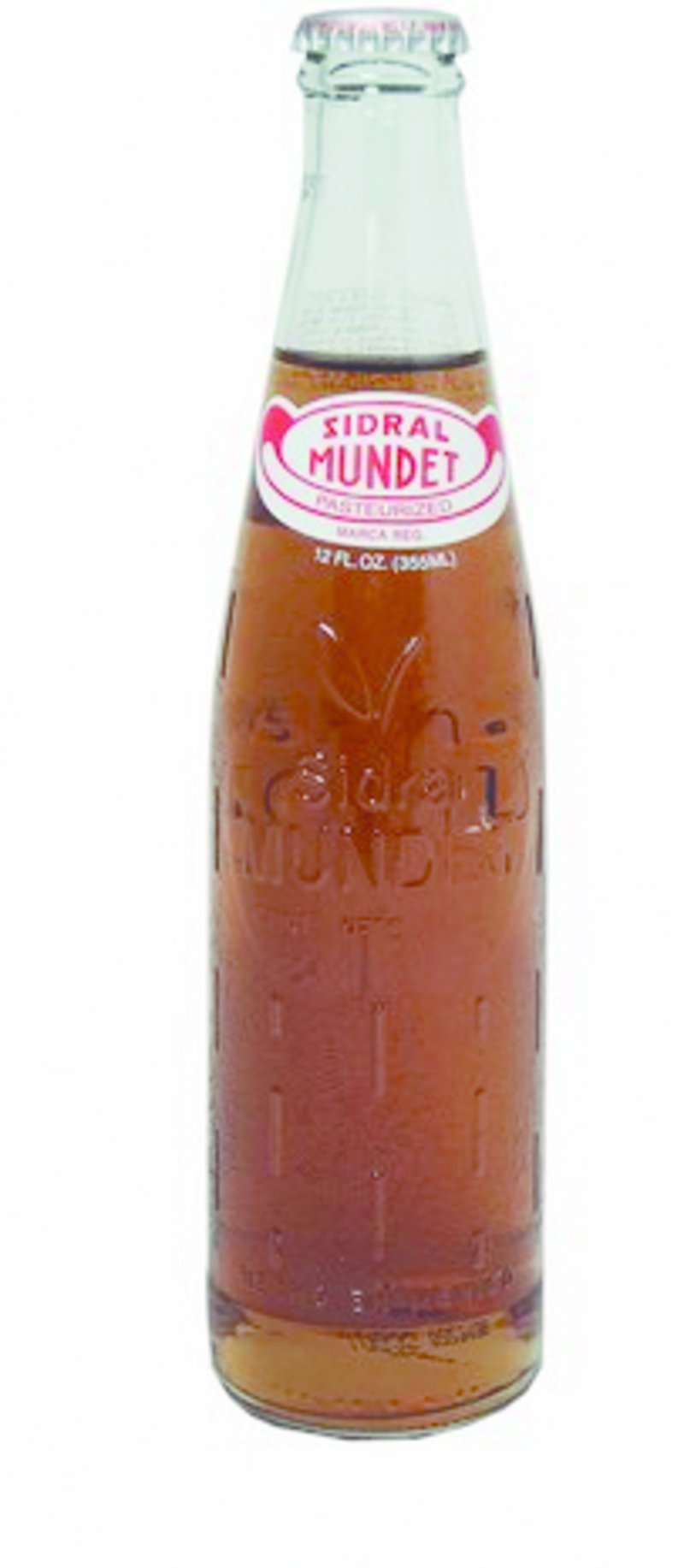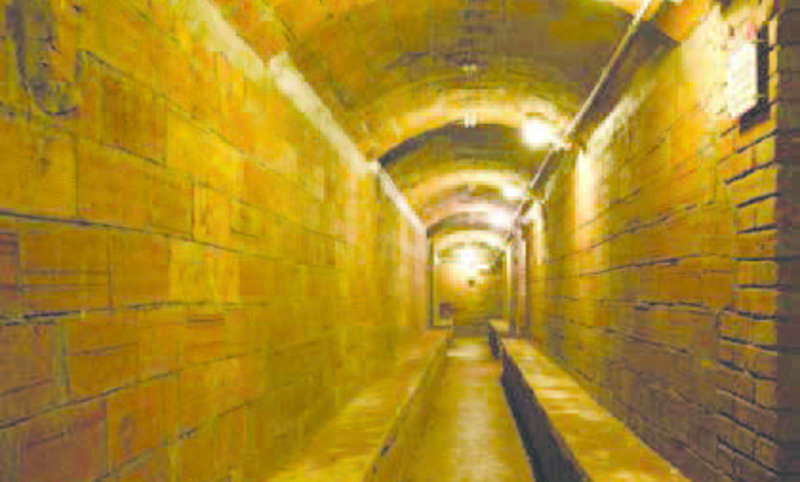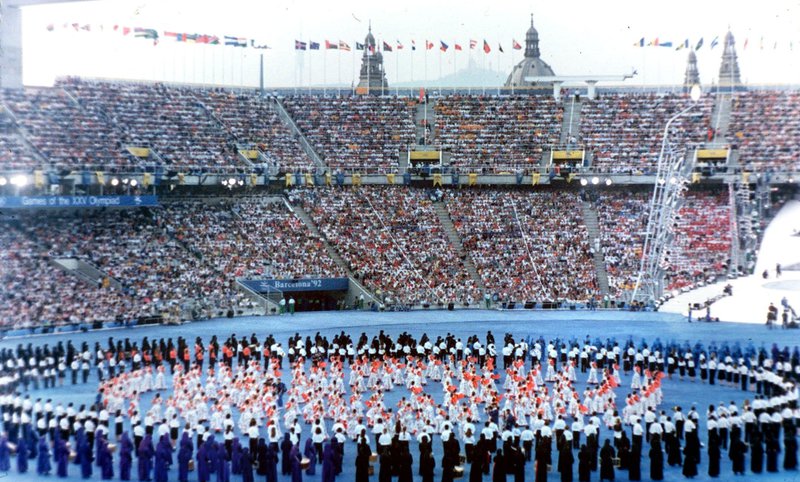Catalonia's gifts to the world
Experts have compiled more than 200 contributions made by Catalans with an impact on the progress of humanity
The submarine, lollipops, the surrealist art of Salvador Dalí or the ‘deconstructivist' cuisine of Ferran Adrià are just some of the great contributions that Catalans have gifted to the world. And, these are far from being the only ones. The Catalan spirit of innovation, creativity, modernity and consensus is already well-established, as can be seen from the fact that Catalonia was the first European country to have its own parliament, even before England. In fact Catalans can be proud of their collective contributions to society as a whole, some of which have clearly been indispensable to human progress.
Some 223 of these contributions have been compiled in the book, Aportacions Catalanes Universals, published by Pagès editors as part of an initiative from the Fundació Occitano Catalana. With some 744 pages, hundreds of illustrations and weighing more than two kilos, the compilation took a group of experts headed by the foundation's president, Joan Amorós, a full six years to complete. From the beginning Amorós was the driving force behind the project that aims, on the one hand, to generate Catalan self-esteem and, on the other, to show the world that Catalonia is a nation which has given much to the world and as such, deserves international recognition.
Letter of presentation
In a way, the book acts as a letter of presentation for Catalonia as a country, which is why, from June, a campaign will be launched to promote the work abroad: “That means we will personally take the book everywhere, beginning with an important event in Brussels, to which will be invited ambassadors, the European Union's commissioners, the media, and so on,” says Amorós. The Brussels' event will be followed by others in major cities around the world, such as London, Paris, Berlin, Washington, New York, Mexico, and even the Vatican.
According to Amorós, “the idea is to get the Financial Times –or Le Monde, or the New York Times, or whoever– interested in the book, so that they can see that Catalonia is a great nation. People have to see that Catalonia has made important universal contributions in a variety different fields.”
The cultural expert continues: “For example, in certain medical areas we are cracks, as well is in the plastic arts or other areas that perhaps are not so well known but which have had great importance throughout history, such as creating the religious orders.”
Diverse fields
As might be expected, the 223 individual contributions cover a wide variety of fields of expertise. They are classified chronologically and by subject, and are linked to such diverse areas as architecture, literature, the arts, politics, medicine, music, research, industry, ecology, legislation, urbanism, solidarity, theatre, sport, cuisine, education and religion. Despite the difficulty in making the final selection, all the contributions chosen have considerable importance to the wider world as a whole.
When it came to putting the book together, and with such a wide range of subjects to choose from, it was very important to first lay down a framework and then to decide where to focus the attention. Thus, from the start, it was agreed that each contribution would represent a great idea, and that they would not be too personalised, even though many of them are strongly linked with a certain prominent figure: “We have focused only on people from our country, or those who have very close links to it,” says Amorós. As for geographical locations, the book focuses strictly on Catalonia, except during the Middle Ages as well as modern times, when the country's connections with other territories that use the Catalan language are particularly close.
To put everything in context, the book begins with an analysis of Catalonia's history, under the supervision of historian, Jaume Sobrequés. The 223 contributions that follow also feature opinion articles by some 60 relevant figures from just about all the fields of expertise present in Catalonia today.
For the moment, says Amorós, a print run of 6,000 copies has been produced (some 3,000 in Catalan, up to 2,000 in English, 400 in French and 500 in Spanish). Some 2,000 of the copies will be given as gifts, with “the rest, the remaining 4,000, to be sold. Even though the people who have worked on the book did so out of love for their country, the printing costs, the translations, the administration and distribution all have to be paid. With everything included, the costs for this edition come to 235,000 euros. We do not want to earn any profits from it, but it is important to sell all 4,000 copies, because without that we will not be able to carry out the planned international promotion,” says Amorós.
The initiative also has institutional support from local authorities, who will purchase some copies as well as organising promotional events around the country. Due to the book's high price tag, it will not appear in bookshops and is only currently available from the website of the Fundació Occitano Catalana (www.fundoc.net).
“Luckily, the publisher, to whom we are grateful, has funded the project, which we will pay back as we sell copies. It is very important that people understand that if they buy the book they will not only get a copy, but will also help the effort to promote and distribute it abroad. Also, we do not rule out selling the book in bookshops at some point once this campaign is over, but obviously with a high price tag,” concludes Amorós.
A wide but subjective selection
Choosing a selection of the universal contributions made by Catalans is a subjective task. Yet, the examples featured cover a variety of fields, from cartography (Atles Català) and inventions (submarine) to major events (1992 Olympic Games) and research (oncology). The contributions listed in the book (and on these pages) also cover a wide period from the Middle Ages (the first parliament) to contemporary cuisine (Ferran Adrià).
Compendium of innovation
Aportacions catalanes universals is a limited edition encyclopaedia of world-changing discoveries, inventions, creations and research made by Catalans.
Contributors:
Publisher:
Pages:
Point of sale:
Special price:
'We Catalans always look ahead'
The main figure behind the book on how the idea emerged and the process of compiling it
Europe's first parliament
Medieval Catalonia was one of the first places to establish legislative and judicial institutions made up of representatives of society, effectively limiting the power of the monarchy
Catalonia's parliamentary institution began in the Middle Ages. It originally developed out of assemblies made up of landowners, church officials, councillors and judges that were held to negotiate peace treaties. It's earliest duties covered legislative and judicial matters. These institutions are the oldest of their kind in Europe. They would have great influence, which was used to facilitate the creation of settlements, to stimulate trade and to represent the constitutional system when dealing with the monarchy.
During the reign of Jaume I (1213-1276), the nascent parliament progressively grew its membership, especially with the inclusion of the so-called prohoms, high-status urban citizens who were widely-respected in society, while the institution became known as the Cort General de Catalunya. Jaume I's son, Pere el Gran (1276-1285), established a system of agreed sovereignty based on the Catalan medieval constitutional tradition, as well as the landed estates. From here on, the king's requests had to be approved by the institution, effectively ending the monarch's absolute power.
The Corts Catalans had advisory and legislative functions and was made up of representatives from society's three estates: the military branch (nobility), the ecclesiastical branch (the Church) and the popular branch (representatives of urban centres). The institution was very advanced for its time and can be considered the first real parliament in Europe. The Corts were called by and presided over by the king. Such meetings were known as Generals de Catalunya, until the reign of Pere el Cerimoniós (1336-1378), when the institution was consolidated and began to collect taxes and administer subsidies to the monarchy. It was the blueprint for today's Generalitat.
The first submarine
Narcís Monturiol from Figueres designed and built the world's first submersible vessel, with successful trials taking place in the port of Barcelona in 1859 and later in Alicante
In 1858, Narcís Monturiol (Figueres, 1819-Sant Martí de Provençals, 1885) announced his invention he called the Ictíneo in a pamphlet and, on June 28 1859, the first trials took place. In September of the following year, an official trial run was made with great success in the port of Barcelona, with another in 1861 in Alicante.
Thanks to popular support for the invention, a royal decree of July 12 1861 assigned support to develop a new project to build a 200-tonne version of the Ictíneo. However, the promised support from the Madrid government never materialised and so Monturiol turned to the public to raise funds and set up Monturiol, Font, Altadill i Companyia, with a capital investment of 1,795,000 pesetas.
In 1865, more trials were held in Barcelona with the vessel remaining submerged with a 16-man crew for six hours. However, the following year the funds ran out and Monturiol was imprisoned on account of his repbulican sympathies. In 1868, his assets were seized and the submarine was sold off, despite the vessel having made an eight-hour immersion with a crew of 12 that year. Yet, the most important part of the invention was the engine, which solved the problem of replacing oxygen within a sealed container.
The engine used a compound of magnesium, zinc and potassium chlorate to generate the necessary temperature for producing steam for propulsion. Oxygen was stored in tanks and used so that the crew could breathe and for the lighting inside the vessel.
In 1940, the German navy tested a propulsion system very similar to Monturiol's in its experimental V-80 submarine and, later, in its U-791 submarines. Narcís Monturiol's invention was recognised in an 1889 letter by Isaac Peral, who invented a similar propulsion system but one that used electricity.
Sant Jordi: a day for love and culture
Catalonia's popular spring festival has been adopted by Unesco as World Book Day
April 23 is the Diada de Sant Jordi, the patron saint of Catalonia, and a festival that celebrates love and culture in the form of exchanging roses and books. On April 17 1456, the Corts Catalanes met in Barcelona cathedral and declared Saint George as Catalonia's patron saint, as he is in many other countries around the world. As the centuries passed, the day gained significance and incorporated a popular tradition: book and flower stalls in public places encouraged people to mix in the open air, buying gifts to exchange with loved ones.
In 1923, editor Vicent Clavel i Andrés, founder of the Cervantes publishers in Valencia and a councillor in the Cambra Oficial del Llibre, suggested turning the day into the Dia del Llibre, in tribute to Miguel de Cervantes, who died on April 23. While Clavel's suggestion was adopted, the first book day took place on October 7 in 1927. In 1929, during Barcelona's International Exhibition, book day and Sant Jordi were celebrated on the same day for the first time. Since then, April 23 has been the festival for celebrating Catalonia's patron saint with roses, while paying tribute to Cervantes – and from 1981, Josep Pla– with books. The popularity of the celebration led to Unesco, in November 1995, announcing April 23 as World Book and Copyright Day.
In Catalonia, large public participation on this day has led publishers to choose it to release new books, while their authors do public book signings. Roses, the other key ingredient, are given to loved ones. It is estimated that six million roses are sold every year on this day. The tradition of gifting roses goes back to the medieval customs.
Leading the fight against cancer
Four of the world's leading oncologists are Catalans, working on metastatic cancer, breast cancer therapy,immunotherapy treatment and microRNA molecules
Oncologist Joan Massagué studies cell division and metastatic cancer. His most important studies are into mechanisms essential for the normal development of tissue. Massagué's research has been decisive in learning about the mechanism that prevents cell proliferation, which when uncontrolled can lead to tumours forming.
His research has led to the identification of genes controlling the spread of breast cancer cells. The discovery allows doctors to predict difficulties when removing tumours and the risk of relapse.
Josep Baselga i Torres is an oncologist from Barcelona who is currently the medical director of the Memorial Sloan-Kettering hospital in New York. He is widely recognised for his research into new breast cancer therapies and for his leadership in improving how scientific advances reach patients.
Oncologist Antoni Ribas is recognised for his development of immunotherapy treatments of metastatic melanoma (the deadliest skin cancer), also the basis for research into other forms of the disease. Science magazine named oncological immunotherapy as the most important scientific milestone of 2013.
A study coordinated by researcher Manel Esteller in 2011 discovered a substance that inhibits the growth of cancer through the activation of non-coding RNA and microRNA molecules. Esteller is the author of more than 300 papers in the field of biomedical science.
Cookery as a creative pursuit
The innovative kitchen creations of Ferran Adrià catapulted the renowned chef into the international limelight and focused attention on Catalonia as a leader in creative cuisine
Among Ferran Adrià's innovations is the nhube concept (spaces combining relaxation and leisure), fast-good (quality fast food) and the bulliolor (a dining room air freshener). However, at the high point of his culinary creativity, Adrià adopted the concept of deconstructionism.
The technique consists of changing the texture and appearance of a recipe's ingredients so that, once reconstructed, the palate detects the mix without loss of individual flavour. Some combinations are playful, presenting a dish as one thing while the mouth discovers another, especially at a range of temperatures. This is where Adrià's famous flavoured foams and warm ice creams come from.
Adrià's constant research and creative thinking meant that his El Bulli restaurant in Roses presented a new menu every year, from which 4,000 diners were served annually out of half a million reservation requests. In 1997, the restaurant received its third Michelin star.
In 1995, Adrià opened El Bulli Catering in Barcelona and then in 2000, El Bulli Taller, dedicated to exploring new concepts with scientific techniques, so-called molecular gastronomy. Recently, he has run the multi-disciplinary Fundació Alícia that includes chefs and scientists.
Successes of the food industry
Chupa Chups lollipops, Gallina Blanca stock cubes, Cacaolat and Cola Cao milkshakes, Sidral Mundet apple drink and Danone yoghurts are just some contributions from the food sector
The food industry is a very strong sector in Catalonia, with production equalling 8.18% of GDP. According to the Fundació Catalunya-Europa, in 2012, its turnover was 24 billion euros. In 1918, businessman Artur Mundet i Carbó began producing a soft drink in Mexico City based on apple essence. The drink was named Sidral Mundet. Today the drink remains popular, especially in the US and other American countries.
In 1931, Marc Viader i Bas, founder of the Letona SA company had the brilliant idea of taking advantage of lactic by-products with no commercial value to produce a chocolate milkshake that was named Cacaolat.
The origins of the multinational Danone are in Barcelona's Raval district where in 1919, Isaac Carasso began making yoghurts to sell to local chemist's. After teaming up with a local lawyer, the company was able to increase production and grow. The brand name comes from Daniel, Carasso's son.
In 1937 during the Civil War, pharmacist Lluís Carulla began to oversee the production of cubes of concentrated vegetables and meat in the kitchens of an elegant establishment on Barcelona's passeig de Gràcia called Saló Rosa. The brand name of the cubes was -and still is- Gallina Blanca.
In 1947 ithe old town on Gràcia in Barcelona, the Nutrexpa SA company, founded in 1940 by Josep Ignasi Ferrero i Cabanach and Josep Maria Ventura i Mallofré, began producing soluble cacao under the brand name Cola Cao.
In 1958, Enric Bernat i Fontlladosa, from a family of sweet makers, invented a type of large boiled sweet that could be held and eaten over a period of time thanks to a protruding wooden stick that looked like a toothpick. Bernat gave the sweet the brand name, Chupa Chups.
The inventor of the air-raid shelter
Industrial engineer Ramon Perera was the creator of a network of underground bomb shelters that saved the lives of thousands of people in Catalonia during the Spanish Civil War
The Spanish Civil War (1936-1939) introduced a new military tactic to the world: the systematic bombing of the civilian population. This technique for weakening the enemy was used during the war in a number of places in Catalonia, primarily Barcelona, but also in Lleida, Tarragona, Sabadell and Terrassa, as well as in other parts of Spain.
The bombings were carried out by Hitler's and Mussolini's air forces on behalf of their ally, general Franco, who was fighting the Republican government for control of Spain.
Ramon Perera, who was a member of the Generalitat's Junta de Defensa Passiva, created a network of underground air-raid shelters that would save the lives of thousands of people. The shelters were commissioned by Manuel Muñoz Díez, Barcelona's urban planning councillor. Despite the construction difficulties presented during wartime, Perera's shelters were so secure there is no record of anyone hurt or killed while using them.
This efficiency caught the attention of other European governments. For example, British engineer Cyril Helsby visited Barcelona to learn more about the shelters, of which 1,400 were built in the Catalan capital, and to study their potential usefulness in London as it became clear that a world war was on its way.
After the republican defeat in 1939, Perera saved as much documentation about the shelters as he could and went into exile. Helsby, who met Perera during his visit to Barcelona, contacted the Catalan in Perpignan and the British secret service smuggled Perera to London, where he later became a member of the Consell Nacional Català. Perera's work on the shelters in Barcelona led to a debate about how best to protect the English capital's civilian population during the Second World War. Perera never returned to Catalonia and died in London in 1984.
Setting the pace for today's Olympics
Barcelona's hosting of the Games in 1992 provided a model of organisation for other venues, broke a host of records and helped put Catalonia and its capital back on the map
While the Olympic Games go back to antiquity and, in the modern age, to 1896 under the auspices of the International Olympic Committee (IOC), Barcelona's hosting of the Games in 1992 set a new standard for the event. A glance at the international media coverage at the time reveals wide-spread praise for the exemplary organisation and the effectiveness of the facilities.
Another aspect that made the Barcelona Olympics such a success was the huge and enthusiastic participation of the public, with some 30,000 volunteers giving up their time to ensure that the event went off without a hitch.
The IOC chairman of the time was the Catalan Joan Antoni Samaranch (1920-2010), who was instrumental in bringing the Games to the Catalan capital, and who revolutionised the Olympic movement during his tenure between 1980 and 2001.
The Barcelona Olympics would go on to beat all records in organising the event, hosting some 10,000 athletes from 165 national Olympic committees. Accommodation in the Olympic village built alongside Barcelona's revamped coastal area to house the sports men and women was offered free for the first time. Also, the opening and closing ceremonies in the imposing Olympic stadium overlooking the city on the mountain of Montjuïc was broadcast to a record 3.5 billion people on televisions around the world.
Another feature of the organisation of these Olympics that other places would go on to emulate was its decentralisation. A host of nearby cities and towns would host different events in new facilities that formed the basis of much-needed urbanisation projects. The 1992 Olympics put Catalonia on the map for many people abroad and helped turned Barcelona into the key European tourist attraction it has since become.
The first astrolabe in western Europe
The first known example in Europe was made in Catalonia in the 10th century
The astrolabe is an ancient astronomical device for calculating the position of the Sun and stars. The most common type of astrolabe is a metal sphere projected onto a plane representing the equator. Typically, astrolabes were made of brass and were about 15 cm in diameter.
Astrolabes are used to show how the sky looks at a specific place at a given time. This is done by drawing the sky on the face of the astrolabe and marking it so positions in the sky are easy to find. To use an astrolabe, the moveable components are adjusted to a specific date and time. Once set, much of the sky, both visible and invisible, is represented on the face of the instrument.
With the compass not yet invented, these devices became essential for navigation in the Middle Ages, although the first astrolabes known go back to the Ancient Egyptians. Centuries later, the Arabs perfected the device and introduced it into Europe.
The first astrolabe with Latin numbers that used Barcelona as its astronomical point of reference was made in Catalonia by the astronomer, Sunifred Llobet, in the 10th century. Today the device is kept in the Institut du Monde Arabe in Paris, although there are two replicas in the Museu de la Ciència i de la Tècnica de Catalunya and Barcelona's Reial Acadèmia de Ciències i Arts.
This first astrolabe has two faces with two engraved discs, one of which features Roman numerals for calculating Barcelona's approximate latitude. At the top of each disc are spheres representing the horizon, the meridian, the tropics and the equator, with the hours represented on the lower part, divided into two 12-hour segments to represent day and night, from which the angle of the Sun or a star can be calculated. This first western astrolabe coincided with the birth of science in Catalonia and the rest of Europe at the start of the medieval period.
A groundbreaking view of the world
The four-metre long Atles Català by Jewish artisan Abraham Cresques is considered an artistic and geographical masterpiece and one of the first complete maps of the known world
“In the 14th century, King Pere III commissioned cartographer Abraham Cresques to produce a large mapamundi. As a result, Cresques's workshop went on to create a map spread over 12 tablets that depict the world, including all the regions known at the time and the names of the peoples who inhabited them. Known as the Atles Català, the map is considered a masterpiece and one of the oldest world maps in existence.
The original map is today kept in the prestigious Bibliothèque Nationale in Paris, with a facsimile in Barcelona's Reials Drassanes. In 2005, Enciclopèdia Catalana published a new edition of the facsimile.
Each pair of the map's tablets make up a 64 × 50 cm surface, and all together the map is around four metres long.
The map shows the known world at the time: Europe, Africa and Asia, from the meridian of the Canary Islands to the China Sea, and from the Tropic of Cancer to parallel 60º N. The illustrations is accompanied by text written in Catalan.
The map begins with a representation of the 30-day lunar cycle and two circular diagrams, one of which is a wind rose showing 16 different winds for calculating high tides during a full moon, while the other has a moveable index to calculate the year's moveable feasts, such as carnival, Easter and Pentecost. There is also a astrological anatomy chart for medicines and a long text about the Earth explaining its origin and dimensions.
The Jewish community in Mallorca, which was heavily involved in trade, were constantly travelling and therefore extending geographical knowledge, particularly ports. Also, as good cosmographers, there were numerous inventors in this community that came up with devices for navigating via the stars, as well as artists capable of making accurate graphical representations of trade routes. It is for this reason, that the commission for such an important artefact as the Atles Català was handed to Abraham Cresques.


